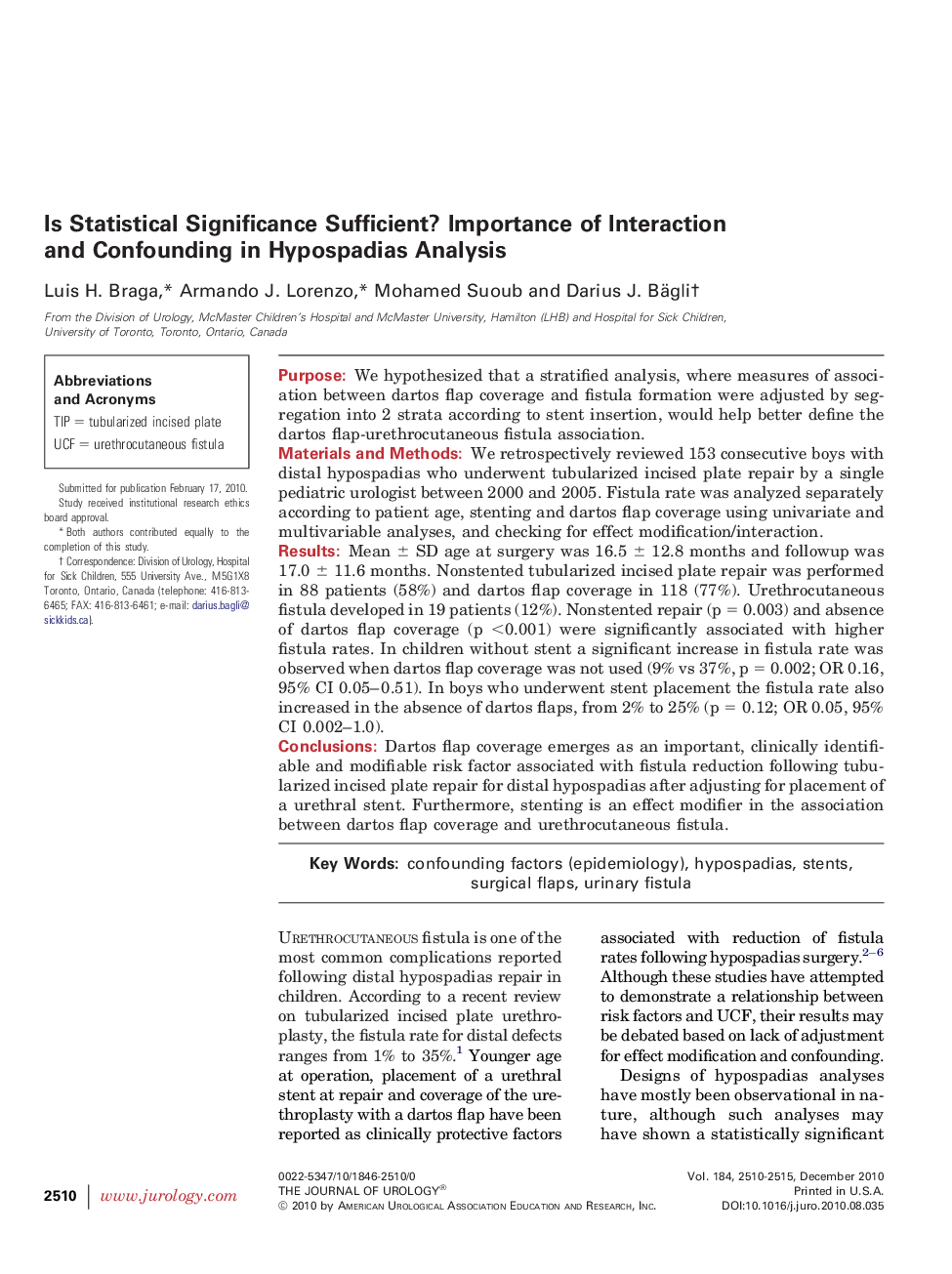| Article ID | Journal | Published Year | Pages | File Type |
|---|---|---|---|---|
| 3873003 | The Journal of Urology | 2010 | 6 Pages |
PurposeWe hypothesized that a stratified analysis, where measures of association between dartos flap coverage and fistula formation were adjusted by segregation into 2 strata according to stent insertion, would help better define the dartos flap-urethrocutaneous fistula association.Materials and MethodsWe retrospectively reviewed 153 consecutive boys with distal hypospadias who underwent tubularized incised plate repair by a single pediatric urologist between 2000 and 2005. Fistula rate was analyzed separately according to patient age, stenting and dartos flap coverage using univariate and multivariable analyses, and checking for effect modification/interaction.ResultsMean ± SD age at surgery was 16.5 ± 12.8 months and followup was 17.0 ± 11.6 months. Nonstented tubularized incised plate repair was performed in 88 patients (58%) and dartos flap coverage in 118 (77%). Urethrocutaneous fistula developed in 19 patients (12%). Nonstented repair (p = 0.003) and absence of dartos flap coverage (p <0.001) were significantly associated with higher fistula rates. In children without stent a significant increase in fistula rate was observed when dartos flap coverage was not used (9% vs 37%, p = 0.002; OR 0.16, 95% CI 0.05–0.51). In boys who underwent stent placement the fistula rate also increased in the absence of dartos flaps, from 2% to 25% (p = 0.12; OR 0.05, 95% CI 0.002–1.0).ConclusionsDartos flap coverage emerges as an important, clinically identifiable and modifiable risk factor associated with fistula reduction following tubularized incised plate repair for distal hypospadias after adjusting for placement of a urethral stent. Furthermore, stenting is an effect modifier in the association between dartos flap coverage and urethrocutaneous fistula.
